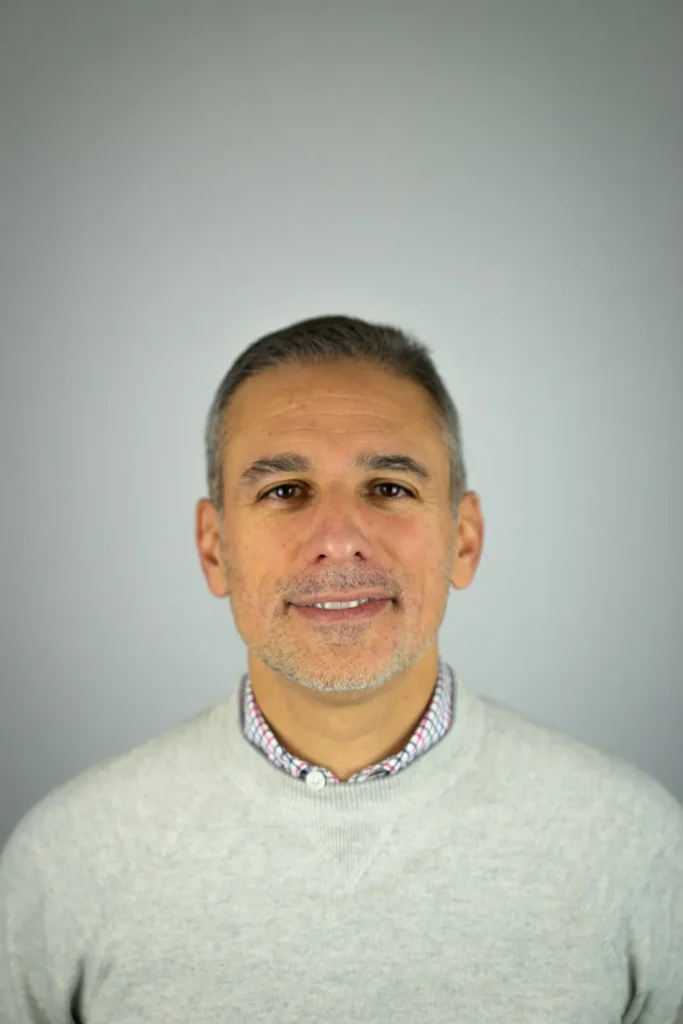AUTHORITY MAGAZINE: MEET THE DISRUPTORS: CEO STUART RUDERFER OF CIVIC ENTERTAINMENT GROUP ON THE FIVE THINGS YOU NEED TO SHAKE UP YOUR INDUSTRY

As a part of our series about business leaders who are shaking things up in their industry, I had the pleasure of interviewing Stuart Ruderfer.
Stuart is a leading marketing and communications entrepreneur with 20+ years of advising top brands across the media, tech, automotive, hospitality, finance, and non-profit sectors. Since its founding in 2000, Stuart has overseen Civic’s growth into one of the industry’s most innovative strategic communications companies. He has led its creative, strategic, and client development work ranging from Ford to Snapchat, CNN, and HBO. Stuart has extensive experience in media and entertainment, working with the leaders of NBCU, Disney, A&E, and Warner Brothers Discovery, among others. In addition to overseeing the company’s overall growth, he has devoted special attention to projects that address Civic’s commitment to innovative pro-social efforts focused on education and social justice.
…
Thank you so much for doing this with us! Before we dig in, our readers would like to get to know you a bit more. Can you tell us a bit about your “backstory”? What led you to this particular career path?
I’ve always believed in public-private partnerships. I got my first job at the parks department because I sold sponsorships to our public school junior prom.
Kidding aside, companies grow when they build community. I’ve always been interested in, and inspired by public service and see the relationship between public and private realms as symbiotic. Each plays a role but when we bring them together, both are made better. Today, even as we live in the most amazing time ever in human history, the challenges we face are more complex — from reimagining cities to inequality and taking care of our planet — so they require us to break down silos, build multi-sectoral networks to rise to the challenge.
The opportunity to start my career in public service in NYC fulfilled a life dream. Back in the mid/late 90s, New York City had fallen on harder times. Crime was rising and budgets were tight. Based on that junior prom credential — a friend called me at law school and asked if I’d join the city government and create a new public-private partnership experiment. We saw an opportunity to invite companies to help the city underwrite free recreation and parks programs in exchange for sponsorship and promotion. Many brands loved the idea of partnering with the city and serving the community and the kind of attention and value it delivered — but no one really knew how to navigate it. So opening the city doors for business, enabled us to deliver amazing services from free swim lessons for thousands of young NYers to world-class concerts in Central Park broadcast around the world. Even those big moments served many purposes; for the brands, they had a canvas and mission unlike any other; for the city, we could convene hundreds of thousands together and make the big city feel like a small village, vest people in the city, raise money for parks and rec and build back the NYC brand — communicating on the covers of every paper and website that NYC was back and safe and millions came from everywhere to the capital of the world.
This sparked a deep curiosity about the intricate relationship between government and businesses and how they might work together in new ways to help create a better world.
Fast-forward to the birth of Civic in 1999. David Cohn and I started in my tiny NYC apartment living room. Our ambition was to bring culture and community together — to help brands build community and show up in communities they care about for growth in authentic and valuable ways.
I couldn’t be more proud that we’re soon celebrating our 25th Anniversary.
Can you tell our readers what it is about the work you’re doing that’s disruptive?
The innovation space sits at the intersection of market and moral mission. We’re guided by one fundamental idea: humanity is found in relationships. When the welfare of each is the concern of all, and the life of the whole is the concern of each, there is no limit to what we can achieve.
Our team is a unique mix of experts across creative, strategy, brand, entertainment, media, government/politics, NGOs, and technology, working with companies to solve some of the world’s great challenges in new energy, health, and emerging technologies.
We’re born of disruption.
When we started Civic 25 years ago, we saw a big opportunity. Marketing has been done the same way for 100 years. Most marketing seemed promotional, tactical, and self-serving; not substantial or strategic. We saw how marketing could be approached differently. That it should be focused on brand and business growth — and that the marketing itself ought to be valuable to customers.
So we started Civic with that approach. And it worked. We continuously challenge convention. Much of our work is about bringing to life a brand’s forward-looking vision. So that demands disruption with their internal and external communities — to think differently about their positioning and how and where they show up. With the constant stream of S-curves coming at C-suites, marketers, and communicators in this era, there is a need for nearly constant questioning and disruption.
Can you share a story about the funniest mistake you made when you were first starting? Can you tell us what lesson you learned from that?
It was during our first project with our first client: Disney. We were tasked with creating a public-private event to celebrate the launch of a new series on A&E Networks, “Horatio Hornblower,” centered around a 19th-century British naval captain.
We proposed staging mock sea battles on the water in major cities. Our hiccup came during a call with San Francisco. As we confidently mentioned planning the event at piers 39 and 40, the city pointed out that odd-numbered piers were on one side of the city, and even-numbered piers were on the opposite side. We worked through it and doubled down on the details.
We all need a little help along the journey. Who have been some of your mentors? Can you share a story about how they made an impact?
Our first boss, the NYC parks commissioner, made a lasting impact on us.
He encouraged us to challenge conventional ideas about parks. We organized a funeral for a tree and planted the commissioner in the ground on Arbor Day — creativity knew no bounds, and each day brought a new opportunity to create truly original ideas.
He was also committed to promoting green spaces, and expanding the “Emerald Empire” for the benefit of communities citywide. Indeed the park system grew more than it had ever in its history — second only to Robert Moses era.
His bold approach is a cornerstone of my professional journey.
In today’s parlance, being disruptive is usually a positive adjective. But is disrupting always good? When do we say the converse, that a system or structure has ‘withstood the test of time’? Can you articulate to our readers when disrupting an industry is positive, and when disrupting an industry is ‘not so positive’? Can you share some examples of what you mean?
Disruptive ideas have ushered in an era marked by improvements in the climate, extended life spans, and a decline in disease. It is undeniably a time of positive change, necessitating a deliberate embrace of disruption in the industries we influence.
We’ve had the privilege to work in the auto sector as it goes through the biggest business model disruption since the first vehicles rolled off assembly lines 120+ years ago. Everything is changing — from how we propel cars, use them, buy them, hail and rent them. What digital vehicles can create for people and our society is extraordinary. Of course it’s critical to manage this disruption in ways that progress leaps and keep in mind public safety and the massive jobs transition coming for people in and around the auto sector.
This is the classic innovator’s dilemma — as we improve one area we constrain another. I expect that the people designing this future in a way that is equal parts technology and sociology will be the winners long term. The winners won’t be focused on designing a connected vehicle or ecosystem but those visionaries who are designing for people to have a better day. We view technology not as a magical force but as a tool to serve humanity.
By nurturing a mindset that views disruption as a tool in service of humanity, we can harness its potential to create a future that is not only technologically advanced but also socially equitable and sustainable.
Can you please share 5 ideas one needs to shake up their industry?
- Community-first. Airbnb’s community-centric model created a network of hosts and guests where hosts become ambassadors for their local communities, introducing visitors to authentic, off-the-beaten-path experiences and guests are immersed in the local culture. This has disrupted the traditional hotel industry and contributed to a more personalized and community-driven approach to travel.
- Listen more, talk less. Advocate for a communication style that values active listening over constant self-promotion.
- Public-private collaboration is the biggest opportunity for growth. There is potential for significant advancement when private enterprises and public entities work together. By combining resources, expertise, and perspectives from both sectors, there is an opportunity to address complex challenges and create sustainable solutions.
- Collaborate — especially in ways that might seem new or even uncomfortable. When we explore unconventional partnerships and methods of cooperation, growth and progress often emerge. Be open to stepping outside your comfort zone, embracing new ideas, and working with diverse partners who bring different perspectives and skills.
- Stop selling and promoting; this industry needs to take seriously our work has creating value — let the marketing itself create value. By prioritizing products or services that genuinely contribute to the community’s well-being, marketing becomes an organic extension of the value generated. This approach fosters authentic connections and makes community members advocates, driving sustainable growth through genuine shared experiences.
We are sure you aren’t done. How are you going to shake things up next?
Make AI a tool for building community. Look for opportunities to build community brands in space.
Do you have a book, podcast, or talk that’s had a deep impact on your thinking? Can you share a story with us? Can you explain why it was so resonant with you?
Right now I’m listening to the Lex Friedman podcast. The guests are the most fascinating people on the planet and the conversations really wander so you never know what you’re going to get it. I often take a note or two on what I’ve heard.
Can you please give us your favorite “Life Lesson Quote”? Can you share how that was relevant to you in your life?
4000 Weeks. Time is the most valuable currency in life, spend it wisely. Don’t count the days, make the days count.
You are a person of great influence. If you could inspire a movement that would bring the most amount of good to the most amount of people, what would that be? You never know what your idea can trigger. 🙂
I’d love to inspire a movement that builds bridges across divisions in the world. We are social. We’re stronger together. Inspired by David Brooks’ idea of “weavers,” amazing people are mending our social fabric and tackling complex issues in their communities, strengthening our interconnected world by promoting unity and understanding. Focusing on common ground and collaboration can bridge gaps, encourage inclusiveness, and create a stronger, more resilient society for future generations.
How can our readers follow you online?
https://www.linkedin.com/company/civic-entertainment-group
This was very inspiring. Thank you so much for joining us!
See the article here on Medium, written by Authority Magazine Editorial Staff.
